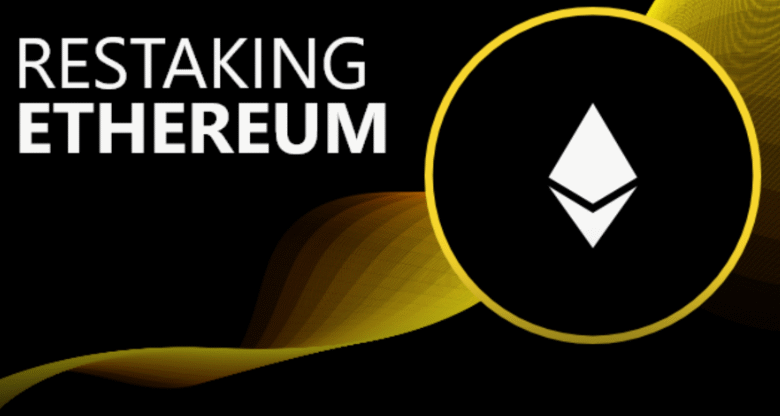How Ethereum Restaking Enhances Protocol Security in 2025?

Ethereum restaking represents a revolutionary advancement in blockchain infrastructure that extends the security model of Ethereum’s proof-of-stake consensus mechanism to additional protocols and services. This innovative concept, primarily pioneered by protocols like EigenLayer, enables validators and stakers to maximize their capital efficiency while simultaneously contributing to the security of multiple blockchain applications.
The restaking ecosystem has gained tremendous momentum throughout 2025, with EigenLayer securing over $12 billion in total value locked (TVL) and receiving substantial investment from prominent venture capital firms like a16z. Understanding restaking has become essential for anyone seeking to navigate the evolving landscape of Ethereum-based decentralized finance and infrastructure services.
Understanding the Fundamentals of Restaking
Restaking introduces a new on-chain primitive, similar to rehypothecation, which allows either natively staked ETH or Liquid Staking Tokens (LSTs) to be restaked in exchange for additional yield. This mechanism creates a powerful synergy between Ethereum’s base layer security and emerging blockchain applications that require their consensus mechanisms.
The concept builds upon Ethereum’s existing proof-of-stake infrastructure, where validators secure the network by locking up ETH tokens. Traditional staking limits validators to ensuring only the Ethereum mainnet, but restaking protocols enable these identical validators to extend their security guarantees to additional services, known as Actively Validated Services (AVS).
EigenLayer, at its core, enables Ethereum validators to stake their ETH to secure other protocols, known as Active Validated Services (AVS). The restaking mechanism pools the security together, increasing the costs of potential attacks and building a stronger ecosystem.
How Ethereum Restaking Works
The restaking process begins when validators or delegators deposit their staked ETH or liquid staking tokens into a restaking protocol. These assets maintain their original staking rewards from Ethereum while simultaneously being allocated to secure additional protocols and applications.
ETH Restaking enables your staked Ether to serve as crypto-economic security for protocols other than Ethereum, potentially earning additional restaking rewards in the process. EigenLayer is a protocol built on top of Ethereum, acting as a middle layer that extends the capabilities of network validators beyond the base layer.
Participants can choose to restake either directly through native restaking, where they run their own validator nodes, or through liquid restaking, where they delegate their tokens to professional operators. This flexibility accommodates both technical users who prefer direct control and passive investors seeking simplified participation.
Active Validated Services (AVS)
Active Validated Services represent the protocols and applications that benefit from restaked security. These services can include data availability layers, oracle networks, cross-chain bridges, rollup sequencers, and various middleware solutions that require consensus mechanisms.
EigenLayer aims to create a restaking marketplace, where protocols can buy pooled security from validators, while validators can sell pooled security to protocols. This marketplace approach democratizes access to economic security for emerging protocols that would otherwise need to bootstrap their own validator sets from scratch.
The AVS ecosystem encompasses a wide range of blockchain infrastructure services, each with unique security requirements and reward structures. By participating in multiple AVS simultaneously, restakers can diversify their income streams while contributing to the broader development of the Ethereum ecosystem.
Benefits and Opportunities of Restaking
Restaking dramatically improves capital efficiency by allowing the same underlying ETH to secure multiple protocols simultaneously. Instead of requiring separate token holdings for each protocol’s security model, restaking enables a single set of assets to provide security guarantees across various applications.
This efficiency extends beyond individual participants to the broader Ethereum ecosystem. Platforms like EigenLayer facilitate restaking by allowing users to stake their ETH or liquid staking tokens, thereby extending crypto-economic security to other applications on the network and earning additional benefits.

The compound effect of these efficiencies can lead to higher overall yields for participants while reducing the capital requirements for new protocols to achieve meaningful security levels. This creates a positive feedback loop that encourages innovation and experimentation within the Ethereum ecosystem.
Additional Yield Generation
Beyond the base staking rewards from Ethereum, participants who restake can earn additional compensation from the various AVS they secure. These rewards typically come in the form of protocol tokens, fee-sharing arrangements, or additional ETH distributions, depending on the specific service requirements.
The yield structure varies significantly across different AVS, with some offering fixed rates while others provide variable compensation based on network usage and fee generation. This diversity allows investors to construct portfolios of AVS participation that align with their risk tolerance and yield expectations.
Ecosystem Security Benefits
From a broader perspective, restaking strengthens the entire Ethereum ecosystem by reducing the security fragmentation that occurs when each protocol must establish its own validator set. This pooled security model creates network effects where the security of individual protocols increases as more participants join the restaking ecosystem.
The enhanced security benefits extend to end users of these protocols, who can interact with applications that have inherited Ethereum’s robust security guarantees without needing to understand the complex technical details of each protocol’s consensus mechanism.
Major Restaking Protocols and Platforms
EigenLayer has emerged as the dominant force in the Ethereum restaking space, establishing the foundational infrastructure and standards that other protocols have built upon. a16z is investing $70 million in EigenLayer, the largest restaking protocol on Ethereum, with a total value locked (TVL) of over $12 billion.
The protocol has achieved several significant milestones throughout 2025, including the implementation of slashing mechanisms that complete its original vision for programmable security. These developments have solidified EigenLayer’s position as the primary infrastructure layer for Ethereum restaking.
EigenLayer’s approach focuses on creating a flexible marketplace where AVS can access security services while providing stakeholders with diverse opportunities for yield generation. The protocol’s modular design allows for continuous expansion as new types of actively validated services emerge.
Liquid Restaking Solutions
The development of liquid restaking tokens (LRTs) has created additional accessibility for participants who prefer not to manage the technical complexities of direct restaking operations. LRTs repurpose staked ether to support external systems, such as rollups and oracles, with an economic security layer.
These liquid solutions provide immediate liquidity and simplified participation while maintaining exposure to restaking rewards. Various protocols have developed their own liquid restaking implementations, each with unique features regarding supported AVS, fee structures, and risk management approaches.
The liquid restaking sector continues to evolve rapidly, with new protocols launching regularly and existing platforms expanding their service offerings. This competition has driven innovation in user experience, security features, and yield optimization strategies.
Technical Implementation and Architecture
Restaking protocols implement sophisticated mechanisms to coordinate between Ethereum’s base layer consensus and the various AVS requirements. These systems must handle complex interactions, including reward distribution, slashing enforcement, and validator assignment across multiple protocols simultaneously.
The technical architecture typically involves smart contracts that manage the delegation of staking rights, middleware layers that facilitate communication between protocols, and monitoring systems that track validator performance across all secured services.
Understanding these technical foundations helps participants make informed decisions about which protocols to support and how to structure their restaking strategies for optimal security and yield outcomes.
Validator Infrastructure Requirements
Successful restaking operations require a robust infrastructure capable of supporting multiple protocol requirements simultaneously. This includes computational resources for running various client software, networking capabilities for participating in different consensus mechanisms, and monitoring systems for tracking performance across all AVS.
The infrastructure requirements can vary significantly depending on the specific combination of AVS that a validator chooses to use for security. Some services may require specialized hardware or software configurations, while others may have specific geographical or connectivity requirements.
Summary
The restaking ecosystem continues to expand beyond its initial focus on infrastructure services to encompass a broader range of applications. New categories of AVS are emerging that leverage restructured security for novel use cases, including decentralized identity systems, reputation networks, and governance mechanisms.
This expansion demonstrates the versatility of the restaking model and suggests continued growth opportunities as developers identify new applications that can benefit from Ethereum’s pooled security.
As the restaking ecosystem matures, regulatory frameworks are beginning to address the unique characteristics of these systems. Understanding the evolving regulatory landscape becomes increasingly important for both protocol developers and participants.
The regulatory clarity that emerges will likely influence the development trajectory of restaking protocols and may create new compliance requirements that affect operational procedures and participant eligibility.
